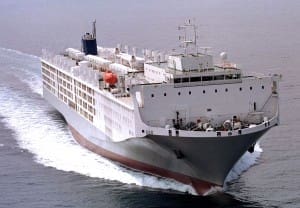WELLARD Rural Exports chief executive officer Fred Troncone is just waiting for a protocol to be negotiated for the export of live beef cattle to the United States and Mexico – and he is adamant that both will happen.
Though he would not speculate on how long protocol approval might take, at Beef Australia 2015 yesterday he said “weeks is reasonable” and live cattle exports could take place in the near future.
And he believes the advent of live exports to the countries would also be “fantastic” news for Australian beef processors.
“Basically we are waiting for a protocol to be negotiated,” he said.
“There was a meeting of the protocol meeting here in Rockhampton in the last couple of days,” Mr Troncone said.
“I believe some progress was made on advancing that protocol discussion for the US and now it’s just waiting for that to go ahead.”
He was keen to see protocol discussions progress after an increase in demand from US and Mexican importers.
“We have had a number of requests from the US and Mexico for live (beef) cattle shipments.
“Obviously we have capacity to ship up there, but at the moment our boats are deployed into other markets,” he said.
“We always assess opportunities based not only on how much money we can make, but also by the relationship we have with some of our purchasers, so we wouldn’t let down our existing clients for the sake of rushing off to the US.”
“But certainly we have lots of opportunities and when we have available shipping space we could deploy that to the US.”
Mr Troncone said he would not like to speculate because protocol negotiations involve multiple rounds of discussions to clarify various points.
“It is not unusual for these things to take weeks, but hopefully not months. You would have to expect that the right processes have to be followed and engagement with foreign governments as well, you have to expect what they want to get out of the process,” he said.
“I think weeks is reasonable.”
Less cattle, less beef
Mr Troncone drew attention to the 16 percent drop – a reduction of 17 million head – in the US cattle herd in the last 30 years.
“They are producing less beef, they’ve got less cattle. Canada and Mexico have been sending live cattle into the US, but in the last 30 years, the Mexican herd has also halved.”
“The Americans are doing what the Chinese have done – buying cattle from the countries around them – to the north and south. And if that keeps going, where are they going to look to next? They will probably come to Australia.”
Mr Troncone said negotiating a live beef cattle protocol to the US was a lower priority until this week, when demand and requests for live cattle from the US and Mexico resurfaced.
He said it was time that Australia got its act together and agreed on a protocol.
“I think it is inevitable; it’s going to come.”
Though Australia exported a lot of beef to the US (397,889t last year, just short of the 2001 record volume), there was still that point where the price of cattle in US almost justifies exporting cattle from Australia.
Mr Troncone said live cattle can be shipped to the US for a competitive price.
“It works,” he said. “So we could see those exports into the US getting going in the near future.”
“(It’s a) fantastic story for Australian beef processors, because if the US is short of beef they (the US industry) are less likely to export to other countries, because they will be looking to service their own market first before they start sending it off to places like Japan, Korea or China.”
“We’ve almost got 100pc overlap in markets, so if they supply less boxed beef into those countries we should be able to supply more into those same countries.”
In a wide-ranging presentation on live and boxed beef markets across the world, Mr Troncone reminded producers to be aware of the point at which Australian beef cattle supplies became uncompetitive in specific markets.
Raising a scenario of other countries potentially supplying some of Australia’s live export markets, such as Indonesia, he urged vigilance on the cost of production to maintain price competitiveness.
“We need to get very good at producing cheaply,” he said.
- Beef Central first highlighted the prospect of live exports to the US in this article last month.


